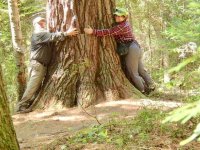- Joined
- Aug 10, 2018
- Messages
- 2,051
- Reaction score
- 6,825
I watched a YouTube video last night where the kid (yep, I'm again considering taking advice from someone 1/2 my age... slow learner) ...anyway... this kid said that he's found longer portages to be easier if he walks rapidly / jogs them and felt that, in the long run (pun intended), it was less tiring than walking / plodding.
While I doubt that my (twice broken, mildly arthritic) right ankle can survive a forced march over uneven terrain with pack &/or canoe, I can see where the youngster might be right and I may try picking up the pace as much as the terrain and the ankle will allow. What's your experience been? Does moving more quickly tire you less? Does the length of the trek influence the pace? (should I stop watching YouTube? lol)
While I doubt that my (twice broken, mildly arthritic) right ankle can survive a forced march over uneven terrain with pack &/or canoe, I can see where the youngster might be right and I may try picking up the pace as much as the terrain and the ankle will allow. What's your experience been? Does moving more quickly tire you less? Does the length of the trek influence the pace? (should I stop watching YouTube? lol)

